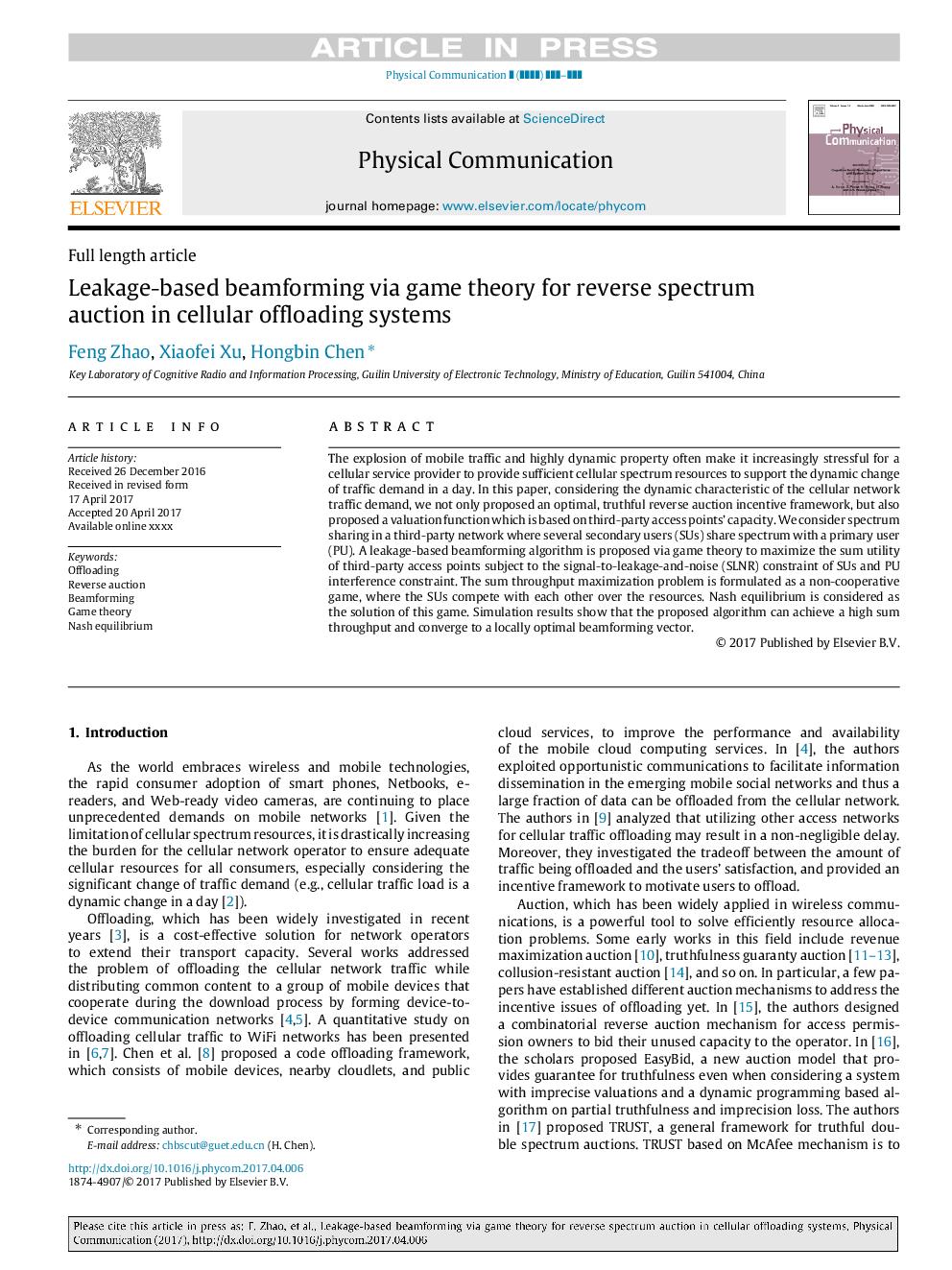| Article ID | Journal | Published Year | Pages | File Type |
|---|---|---|---|---|
| 6889255 | Physical Communication | 2017 | 7 Pages |
Abstract
The explosion of mobile traffic and highly dynamic property often make it increasingly stressful for a cellular service provider to provide sufficient cellular spectrum resources to support the dynamic change of traffic demand in a day. In this paper, considering the dynamic characteristic of the cellular network traffic demand, we not only proposed an optimal, truthful reverse auction incentive framework, but also proposed a valuation function which is based on third-party access points' capacity. We consider spectrum sharing in a third-party network where several secondary users (SUs) share spectrum with a primary user (PU). A leakage-based beamforming algorithm is proposed via game theory to maximize the sum utility of third-party access points subject to the signal-to-leakage-and-noise (SLNR) constraint of SUs and PU interference constraint. The sum throughput maximization problem is formulated as a non-cooperative game, where the SUs compete with each other over the resources. Nash equilibrium is considered as the solution of this game. Simulation results show that the proposed algorithm can achieve a high sum throughput and converge to a locally optimal beamforming vector.
Related Topics
Physical Sciences and Engineering
Computer Science
Computer Networks and Communications
Authors
Feng Zhao, Xiaofei Xu, Hongbin Chen,
